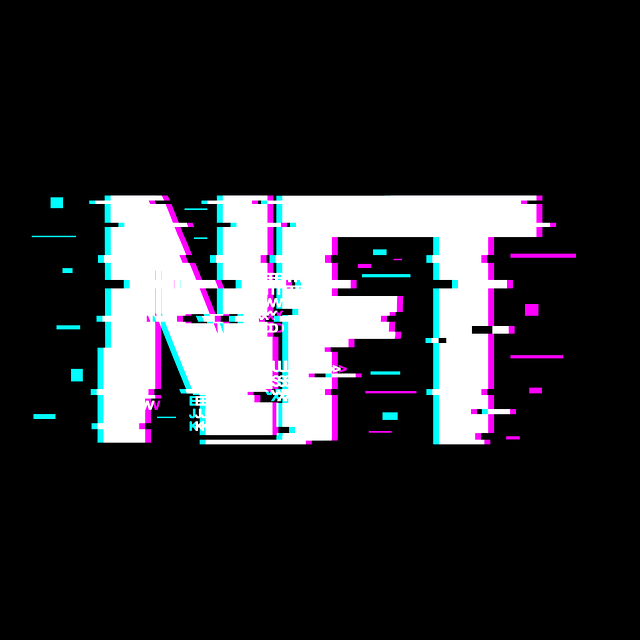What Is the Best Crypto Prediction Site? Expert Comparison and Practical Guide
Author: Jameson Richman Expert
Published On: 2025-11-05
Prepared by Jameson Richman and our team of experts with over a decade of experience in cryptocurrency and digital asset analysis. Learn more about us.
Searching for what is the best crypto prediction site can feel overwhelming. This guide explains how crypto prediction platforms work, which evaluation criteria matter most, and how to choose or test the service that fits your strategy. You’ll get actionable testing methods, comparisons of leading tools, examples of on-chain and technical signals, and links to useful resources so you can make an informed decision without falling for overhyped claims.

Why crypto prediction sites matter — and what they really do
Crypto prediction sites promise to forecast price moves, identify high-probability trade setups, or provide probabilistic scenarios for assets like Bitcoin and Ethereum. They typically use one or more of the following approaches:
- Technical analysis — indicators, pattern recognition, and backtested strategies (e.g., RSI, MACD, moving averages, Ichimoku).
- On-chain analytics — blockchain-derived metrics such as active addresses, exchange inflows/outflows, realized cap (examples: Glassnode, CryptoQuant).
- Sentiment analysis — social media, news, Google Trends and forum signals processed via NLP.
- Machine learning & AI — supervised models trained on historical price, on-chain, and macro features.
- Expert-driven forecasts — human analysts publishing probabilities and scenario analyses.
All methods have strengths and limitations. No site can guarantee future performance; reliable platforms improve the probability of favorable outcomes while clearly documenting assumptions, timeframes, and historical accuracy.
Key criteria to evaluate “the best crypto prediction site”
When answering what is the best crypto prediction site, use objective evaluation criteria. Below are the most important factors to weigh:
- Transparency of methodology — Does the provider explain how predictions are generated? Are indicator settings, model features, and backtesting procedures available?
- Backtested and live performance metrics — Look for realistic, out-of-sample backtests and real-time track records (win rate, risk-adjusted return, drawdown).
- Data sources and freshness — Quality platforms use reliable exchange data, blockchain data providers, and up-to-date alternative data.
- Coverage and customizability — Support for multiple assets, timeframes, and the ability to tune signals to your risk profile.
- User interface & alerts — Clear charts, mobile alerts, API access, and integration with trading platforms for execution.
- Reputation & community feedback — Independent reviews, community discussions, and professional endorsements.
- Cost vs. value — Free tiers are useful, but premium models should clearly justify added value versus free tools like TradingView; read this guide on using TradingView effectively for free to complement predictions: https://cryptotradesignals.live/can-i-use-tradingview-charts-for-free-complete-guide-tips-and-workarounds/320626.
- Legal & ethical transparency — Clear disclaimers, no guaranteed returns, and proper data privacy practices.
Types of crypto prediction services — choose by use case
Different traders need different features. Below are typical service categories and when they’re useful.
1. Signal providers and trading bots
Signal services send trade ideas (entry, stop loss, take profit). Some are manual signals, others feed automated bots. If you want to automate execution, look for robust risk management, verified performance, and connectivity options. For an in-depth look at automated signal bots, see this guide that explains signal bot design and trader use-cases: https://cryptotradesignals.live/understanding-bitcoin-signal-bot-an-in-depth-guide-for-traders/320014.
2. On-chain analytics platforms
Platforms like Glassnode, CryptoQuant, and IntoTheBlock provide metrics that often precede market turning points (exchange flows, long-term holder distribution, realized profit/loss). These are essential if you trade with a macro or accumulation strategy.
3. Quantitative & AI platforms
Services using machine learning combine many features to output probabilistic forecasts. These are attractive for systematic traders but require an understanding of model risk and overfitting.
4. Social & crowd wisdom platforms
Platforms synthesizing investor polls, options positioning, and futures flows can be useful contrarian signals. However, crowd platforms can amplify noise during extreme moves.
5. Charting platforms with community strategies
Charting sites like TradingView host thousands of user-published strategies and indicators. They’re essential for technical traders and can be used for free or upgraded for extra features (see the TradingView guide above).

Top contenders and how they stack up
No single answer fits everyone when asking what is the best crypto prediction site. Below are popular platforms across categories with pros and cons.
Glassnode and CryptoQuant — on-chain leaders
Pros: deep on-chain datasets, institutional features, mature dashboards for network health and exchange flows.
Cons: can be costly; may require learning to interpret signals.
Use when you base trades on long-term holder behavior and macro cycles. For objective context on Bitcoin’s long-term scenarios, this piece on Bitcoin price predictions and scenario modeling is a helpful companion: https://cryptotradesignals.live/how-much-will-bitcoin-be-worth-in-2030-prediction-models-and-realistic-scenarios/320644.
Santiment and IntoTheBlock — sentiment & fundamentals
Pros: combined on-chain + social sentiment features, intuitive visualizations.
Cons: smaller datasets for obscure tokens.
TradingView — technical charting & community signals
Pros: best-in-class charting, thousands of scripts, wide community. TradingView itself is a platform rather than a single prediction model, but its community scripts and alerts make it indispensable for technical traders. If you're budget-conscious, check a comprehensive guide to using TradingView for free: https://cryptotradesignals.live/can-i-use-tradingview-charts-for-free-complete-guide-tips-and-workarounds/320626.
AI/ML forecasting services (various vendors)
Pros: can combine large feature sets and adapt to non-linear relationships.
Cons: risk of overfitting and opacity; look for providers that publish feature importance, validation approaches, and live performance.
Signal marketplaces and Telegram channels
Pros: often low-cost, community-tested signals.
Cons: variable quality, limited transparency, and often no risk management.
How to test and validate a crypto prediction site — practical steps
Don’t take claims at face value. Follow a repeatable validation workflow to determine if a prediction source improves your results:
- Define your metrics — pick evaluation metrics aligned with your goals: total return, Sharpe ratio, max drawdown, hit rate, average risk-reward ratio, and profitability after fees and slippage.
- Collect historical signals — obtain the provider’s past signals or use their public API. If only real-time signals are available, run a paper trading phase for at least 3–6 months.
- Backtest with realistic assumptions — include transaction costs, exchange spreads, and slippage. Backtest on out-of-sample periods (walk-forward testing).
- Compare to benchmarks — benchmark against buy-and-hold, a moving-average strategy, and prominent indices like Bitcoin or a crypto index.
- Check robustness — test across multiple assets, timeframes, and market regimes (bull, bear, sideways).
- Perform forward testing — run the strategy in paper trading (or small live allocation) to verify live performance for at least one full market cycle if possible.
- Monitor and re-evaluate — keep a performance log and re-evaluate monthly. If model accuracy decays, reconsider or combine with additional signals.
Metrics you should demand from any provider
- Time-stamped signal archive — auditable history of signals with entries, stops, and targets.
- Risk metrics — drawdown, volatility, and trade expectancy.
- Out-of-sample validation — separation of train/test data and avoidance of look-ahead bias.
- Data refresh frequency — near real-time vs daily summaries.
- API & execution options — ability to integrate with exchanges or trading bots.

How to combine multiple prediction inputs for better decisions
One common approach to improve predictions is signal fusion — combining orthogonal information sources to reduce false positives. Practical combinations include:
- Technical + on-chain — require a technical breakout to align with positive on-chain flows (e.g., exchange outflows, rising active addresses).
- Sentiment + options flow — use extreme bullish social sentiment as a contrarian warning, confirmed by options skew and put/call ratios.
- AI model + human overlay — use ML predictions for entry timing and a human macro view to adjust position size.
Example workflow: validating a Bitcoin prediction service
Use this practical example to validate a Bitcoin prediction service you’re evaluating:
- Choose your evaluation window (e.g., last 24 months). Include bull and bear periods.
- Download the service’s historical signals for BTC/USD with timestamps.
- Simulate trades with a fixed risk per trade (e.g., 1% of capital) and realistic slippage (0.05%–0.5% depending on liquidity).
- Compute metrics: CAGR, max drawdown, Sharpe ratio, win rate, average R multiple.
- Compare against Bitcoin buy-and-hold and a baseline moving average crossover strategy.
- If available, check on-chain metrics during signal times (exchange inflows/outflows, MVRV). You can learn more about interpreting Bitcoin scenarios and realistic future outcomes here: https://cryptotradesignals.live/how-much-will-bitcoin-be-worth-in-2030-prediction-models-and-realistic-scenarios/320644.
Red flags: when a prediction site is probably unreliable
- Promises of guaranteed returns or extremely high win rates without risk disclosure.
- No verifiable signal history or audited performance claims.
- Opaque methodology with no technical or data explanation.
- Heavy reliance on paid testimonials and no independent reviews.
- Signals that conflict with basic liquidity realities (e.g., high-frequency signals for illiquid altcoins without execution guidance).

Free tools and ways to augment paid predictions
You don’t always need to pay top-dollar to get good predictive insights. Combine free and low-cost tools:
- TradingView — charting and community indicators. Use scripting and alerts for technical strategies (see the TradingView guide above for free options: https://cryptotradesignals.live/can-i-use-tradingview-charts-for-free-complete-guide-tips-and-workarounds/320626).
- On-chain dashboards — many platforms provide limited free access to core metrics (Glassnode Free, CryptoQuant free tiers).
- Social listening — free APIs and public Reddit/Twitter feeds can be mined for sentiment signals. Use caution—these are noisy.
- Paper trading — before committing capital, run any strategy in simulation.
Practical trading setup: executing signals safely
If you decide to use paid signals, a disciplined execution plan reduces risk:
- Position sizing — limit exposure per trade (1–3% of portfolio), adjust for signal confidence.
- Use stop losses — always define downside protection and calculate expected loss.
- Scale in/out — stagger entries and exits to reduce market impact and improve average execution.
- Risk-capital only — allocate only capital you can afford to lose to speculative signal-based trading.
- Automated execution — if you automate, monitor for connectivity issues and validate orders with small test sizes.
If you don’t yet have exchange accounts to execute trades, reputable exchanges where you can register include Binance (register link: https://accounts.binance.info/en/register?ref=12093552), MEXC (register link: https://www.mexc.co/invite/customer-register?inviteCode=mexc-1bE4c), Bitget (register link: https://www.bitget.com/referral/register?clacCode=WSVEGD6H&from=%2Fevents%2Freferral-all-program&source=events&utmSource=PremierInviter), and Bybit (register link: https://www.bybit.com/invite?ref=Q8QKORN). Always perform KYC and security checks before depositing funds.
Realistic expectations: what prediction sites can and cannot do
Be realistic about outcomes. Prediction platforms can:
- Improve probability of profitable trades via better signal quality and quicker alerting.
- Provide alternative perspectives (on-chain, sentiment) you might not have access to alone.
- Help you systematize risk management with predefined trade parameters.
They cannot:
- Predict markets with certainty — crypto markets are influenced by black swan events, macro shocks, and liquidity crises.
- Guarantee specific returns or consistent outperformance during all regimes.

Use cases: which prediction site suits your profile?
- Long-term HODLers — focus on on-chain analytics and macro scenario analyses (Glassnode, CryptoQuant). Read scenario modeling for Bitcoin’s future to inform long-term allocations: https://cryptotradesignals.live/how-much-will-bitcoin-be-worth-in-2030-prediction-models-and-realistic-scenarios/320644.
- Active technical traders — charting platforms and TradingView community scripts are essential (see TradingView usage tips: https://cryptotradesignals.live/can-i-use-tradingview-charts-for-free-complete-guide-tips-and-workarounds/320626).
- Systematic quant traders — combine on-chain feature sets and ML models, ensure robust backtests and live monitoring.
- Beginners — start with free charting and paper trading; learn to interpret signals before subscribing to paid services.
Case study: how a signal bot might be used in a conservative strategy
Example setup for a conservative trader using a Bitcoin signal bot:
- Signal selection: only act on signals confirmed by both the bot and an on-chain outflow indicator.
- Position sizing: 1% of portfolio per trade.
- Stop-loss: 3% below entry or use ATR-based dynamic stop.
- Profit-taking: scale out at 2x risk and 4x risk targets.
- Review: monthly performance audit, adjust parameters if live Sharpe < target.
If you’re evaluating a signal bot specifically, this comprehensive guide explains design considerations for Bitcoin signal bots and how traders use them: https://cryptotradesignals.live/understanding-bitcoin-signal-bot-an-in-depth-guide-for-traders/320014.
High-authority resources to learn more
- Bitcoin — Wikipedia (overview of the asset most predictions center on).
- Technical analysis — Investopedia (foundational concepts for chart-based predictions).
- SEC investor alerts on crypto (regulatory context and investor warnings).

Final checklist before you subscribe
Use this checklist to confirm a provider’s credibility before you pay:
- Do they publish auditable signal history or allow API access?
- Are their backtests realistic and out-of-sample?
- Do they explain the data and methodology used?
- Is customer support responsive and is there an active user community?
- Do they offer a trial or money-back guarantee for live testing?
- Have independent sources reviewed them (Reddit threads, professional blogs)?
Conclusion: choosing the best crypto prediction site for you
Answering what is the best crypto prediction site depends on your trading style, risk tolerance, and technical skills. There’s no universal winner — the “best” service is the one that:
- Provides transparent methodology and auditable performance.
- Matches your strategy (short-term signals vs long-term on-chain insights).
- Allows realistic backtesting and forward testing in paper mode.
- Integrates with your execution system and offers sensible risk controls.
Start with free tools (TradingView and free tiers of on-chain platforms), validate signals with an independent backtest, and only deploy capital when live performance meets your thresholds. Use the in-depth guides linked throughout this article to expand your evaluation — whether you’re exploring TradingView features for free (https://cryptotradesignals.live/can-i-use-tradingview-charts-for-free-complete-guide-tips-and-workarounds/320626), modeling Bitcoin’s long-term scenarios (https://cryptotradesignals.live/how-much-will-bitcoin-be-worth-in-2030-prediction-models-and-realistic-scenarios/320644), or understanding how signal bots function in practice (https://cryptotradesignals.live/understanding-bitcoin-signal-bot-an-in-depth-guide-for-traders/320014).
Finally, protect capital with disciplined risk management, diversify your information sources, and continuously audit any prediction service you rely on. If you’re ready to open exchange accounts to test execution, consider reputable platforms: Binance (https://accounts.binance.info/en/register?ref=12093552), MEXC (https://www.mexc.co/invite/customer-register?inviteCode=mexc-1bE4c), Bitget (https://www.bitget.com/referral/register?clacCode=WSVEGD6H&from=%2Fevents%2Freferral-all-program&source=events&utmSource=PremierInviter), and Bybit (https://www.bybit.com/invite?ref=Q8QKORN).
With disciplined testing and a focus on transparency, you can move from asking “what is the best crypto prediction site” to confidently using prediction insights as part of a robust trading plan.